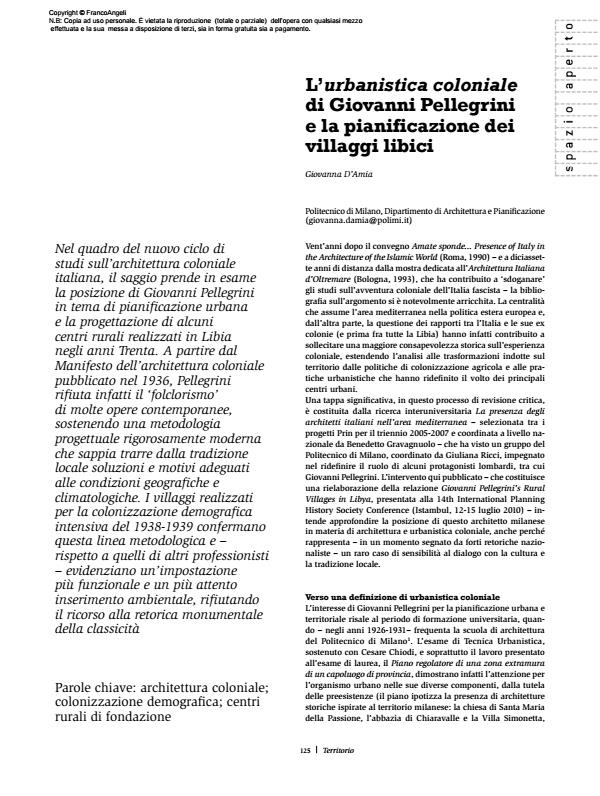Giovanni Pellegrini’s colonial urban planning and Libyan village planning
Journal title TERRITORIO
Author/s Giovanna D'Amia
Publishing Year 2011 Issue 2011/57
Language Italian Pages 10 P. 125-134 File size 1380 KB
DOI 10.3280/TR2011-057016
DOI is like a bar code for intellectual property: to have more infomation
click here
Below, you can see the article first page
If you want to buy this article in PDF format, you can do it, following the instructions to buy download credits

FrancoAngeli is member of Publishers International Linking Association, Inc (PILA), a not-for-profit association which run the CrossRef service enabling links to and from online scholarly content.
In the context of a new course of studies of Italian colonial architecture, this essay examines the position of Giovanni Pellegrini in the fi eld of urban planning and the design of several rural villages built in Libya in the 1930s. From the time of his 1936 colonial architecture manifesto, Pellegrini rejects the ‘folkloristic style’ of many contemporary works, sustaining a strictly modern design methodology that drew from local traditions and motifs suited to the geography and climate. The villages built for the intensive demographic colonisation of 1938-1939 confi rm this methodological approach and compared to those designed by other professionals show a more practical formulation and more specifi c integration with the environment, rejecting recourse to the monumental rhetoric of the classical style.
Keywords: Colonial architecture; demographic colonisation; founding rural villages
Giovanna D'Amia, L’urbanistica coloniale di Giovanni Pellegrini e la pianificazione dei villaggi libici in "TERRITORIO" 57/2011, pp 125-134, DOI: 10.3280/TR2011-057016